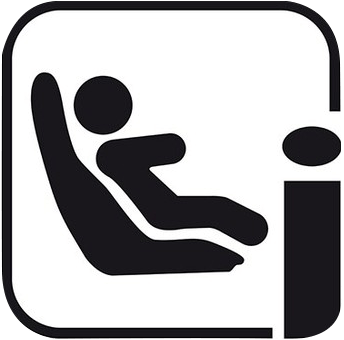Compare up to 3 seats
Booster seats
When it’s time to transition from rear-facing, Axkid’s forward-facing car seats offer the safety, comfort, and support your growing child needs. Our high back booster seat with ISOFIX is designed to keep your child secure for every journey—right through to the next stage of independence.
Read more
-
Award-winning booster
-
QuickFold™ – Compact. Portable. Effortless.
-
ISOFIX or seatbelt flexibility
Age: 4 – 12 years
Weight: 15-50 kg
Height: 100-150 cm
Certificate: UN R129
Installation: ISOFIX, ISOFIX with Base
£399.00Colour:
-


-
ISOFIX installation
-
Adjustable side-wings and headrest
-
Premium textiles
Age: 4 – 12 years
Height: 100-150 cm
Certificate: UN R129
Installation: ISOFIX, Seat Belt Attachment
£199.00Colour:
-
-
Convertible - from booster seat to booster cushion Installation
-
ISOFIX or seat belt
-
Adjustable headrest
Age: 4 – 12 years
Weight: 15-36 kg
Height: 100-150 cm
Installation: ISOFIX
£129.00Colour:
-
Age: 7 – 12 years
Weight: 15-36 kg
Height: 135-150 cm
Certificate: UN R129
£55.00Colour:
When should I switch from a rear-facing car seat to a forward-facing high back booster?
At Axkid, we believe children should travel rear-facing for as long as possible — not just until the legal minimum, but until they’ve outgrown the limits of their rear-facing seat. This usually happens when your child reaches 125 cm in height or 36 kg, which for many children is around 6 to 7 years of age. You can explore our range of rear-facing car seats here, designed to offer maximum protection throughout these early years.
Once your child has outgrown their rear-facing seat by height or weight, it’s time to move to a forward-facing high back booster seat. These seats use the car’s seat belt and are designed to guide it into the correct position across your child’s shoulder and hips, ensuring proper restraint and side-impact protection.
We have high back booster seats that cover the standard 100–135 cm range and extended options that go up to 150 cm and 50 kg — ideal for families looking for added flexibility or support for taller children. Regardless of which model you choose, every Axkid forward-facing car seat is built with the same core principles: safety, comfort, and smart Swedish design that grows with your child.
Installation and belt routing in forward-facing car seats
Our forward-facing car seats are equipped with ISOFIX, ensuring quick, secure, and easy installation. The ISOFIX connectors attach directly to the vehicle’s anchor points, locking the seat firmly in place and reducing the risk of incorrect fitting.
Once installed, the car’s three-point seat belt is used to secure your child. In a high back booster seat, the seat belt must sit correctly across the child’s body: the shoulder belt should rest across the middle of the shoulder—not too close to the neck or arm—and the lap belt should lie flat across the upper thighs, not the stomach.
Our high back booster seats are designed to naturally guide the belt into the correct position every time, giving your child both safety and comfort — and giving you peace of mind. For more information about installation please visit our installation guide.
Can I install a forward-facing car seat in the front seat?
While it’s legally permissible to install a forward-facing car seat in the front passenger seat in the UK, it’s safer to place it in the rear seats. If you must use the front seat, ensure the airbag is active only if the seat is forward-facing. For rear-facing seats, the passenger airbag must be fully deactivated.
Why do Axkid booster seats not use an internal 5-point harness?
While a 5-point harness (or internal harness) is excellent for rear-facing seats, its safety advantage becomes more complicated once the child is forward-facing.
When used in a forward-facing position, a 5-point harness can actually increase the risk of neck and head injuries in certain crash scenarios. That’s because during a frontal collision, the body is restrained by the harness — but the head continues forward with significant force. This can place severe strain on the neck, especially in older, taller, or heavier children.
That’s why many Scandinavian safety experts — including Axkid — recommend moving directly from an extended rear-facing seat to a high back booster seat rather than using a forward-facing harnessed seat. In a high back booster, the child is restrained by the car’s three-point seat belt, which allows the upper body to move more naturally with crash forces. It also works in combination with the car’s safety systems, such as pretensioners and load limiters.
So while 5-point harnesses are ideal for rear-facing, they are not necessarily safer than the seat belt for forward-facing children who have outgrown their rear-facing seat.









